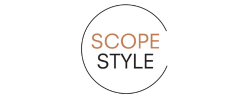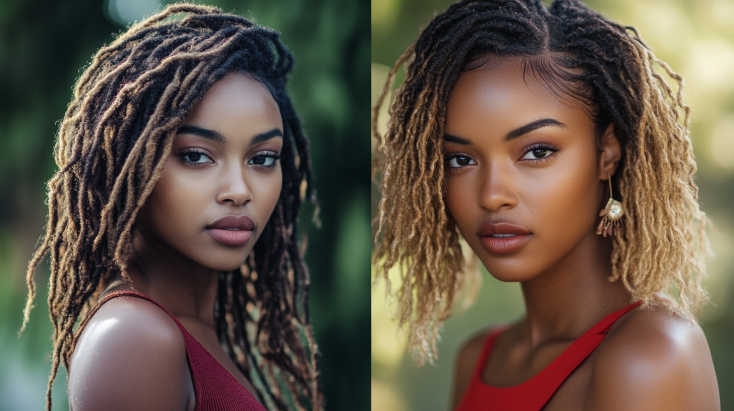Stylish Choices for Stunning Hair: Quick Weave vs Sew-In

Are you tired of the same old hairstyle and looking for a change? Wondering whether a quick weave or sew-in is the best option for you? You’re not alone. Many women face this dilemma when deciding how to switch up their look. In this post, we’ll explore the pros and cons of quick weave and sew-in extensions, helping you make an informed choice that suits your style and lifestyle.
What is a Quick Weave?
A quick weave involves bonding hair extensions to a wig cap or directly to your natural hair using glue. This method is called “quick” because it can be done in a relatively short amount of time compared to other forms of hair extensions.
Pros of Quick Weave
Time-Saving: One of the biggest advantages of a quick weave is its speed. You can have a full head of extensions in just a couple of hours, making it perfect for those with busy schedules.
Cost-Effective: Quick weaves are generally more affordable than sew-ins. The materials and labor involved are less expensive, making this a budget-friendly option.
Versatility: With a quick weave, you can easily switch up your style. The wig cap can be removed and replaced without much hassle, allowing you to try different looks.
Cons of Quick Weave
Durability: Quick weaves don’t last as long as sew-ins. The glue can weaken over time, causing the extensions to loosen and fall out.
Hair Damage: Using glue can potentially damage your natural hair, especially if not applied and removed correctly.
Limited Styling: Since the extensions are glued, styling options like high ponytails or intricate braids can be limited.
What is a Sew-In?
A sew-in involves braiding your natural hair into cornrows and then sewing hair extensions onto these braids using a needle and thread. This method is known for its durability and natural appearance.
Pros of Sew-In
Longevity: Sew-ins can last up to 8 weeks with proper care. This makes them a great option for those looking for a long-term solution.
Natural Look: Sew-ins offer a more natural appearance compared to quick weaves. The extensions blend seamlessly with your natural hair.
Styling Flexibility: Sew-ins allow for a variety of styling options, from ponytails to updos. The extensions are securely attached, giving you the freedom to style your hair as you wish.
Cons of Sew-In
Time-Consuming: Sew-ins take longer to install. The braiding and sewing process can take several hours, which can be inconvenient for some.
Cost: Sew-ins are generally more expensive than quick weaves. The labor-intensive process and the quality of hair used contribute to the higher price.
Tightness: Some people find sew-ins to be tight and uncomfortable, especially during the initial days after installation.
Maintenance Tips for Quick Weave
Avoid Excessive Washing: Washing your hair too frequently can weaken the glue, causing the extensions to detach. Aim for once a week to keep your weave in good condition.
Use Specialized Products: Invest in products designed for hair extensions. These products are formulated to be gentle on the glue while keeping your extensions looking fresh.
Protect at Night: Use a silk or satin scarf to wrap your hair at night. This helps in reducing friction and prolonging the life of your quick weave.
Maintenance Tips for Sew-In
Regular Scalp Care: Keep your scalp clean by using a diluted shampoo. Apply it directly to your scalp and rinse thoroughly to avoid buildup.
Moisturize: Use a lightweight oil to keep your scalp and natural hair moisturized. Dryness can lead to itching and discomfort.
Tighten as Needed: If you notice any loose threads or extensions, visit your stylist for a quick touch-up. This ensures your sew-in remains secure and looks flawless.
Quick Weave vs Sew-In for Different Hair Types
Thin Hair: If you have thin hair, a quick weave might be a better option. The glue used in quick weaves can provide additional volume without putting too much tension on your natural hair.
Thick Hair: Sew-ins are ideal for those with thick hair. The braids provide a solid foundation, ensuring the extensions stay in place.
Curly Hair: Both methods can work for curly hair, but sew-ins are generally preferred. The sewing technique helps in maintaining the natural curl pattern.
Quick Weave vs Sew-In for Different Lifestyles
Active Lifestyle: If you lead an active lifestyle and frequently exercise, a sew-in might be more suitable. The secure attachment method withstands rigorous activities better than glued extensions.
Frequent Travelers: For those who travel often, a quick weave offers convenience. The ease of removal and reapplication makes it practical for those constantly on the move.
Busy Professionals: If you’re a busy professional with little time for hair maintenance, a sew-in provides a long-lasting solution. You won’t need to worry about frequent touch-ups.
Personal Stories
Jasmine’s Experience with Quick Weave: “I opted for a quick weave because I needed a change for an upcoming event. It was done in under two hours, and I loved the look. However, after a few weeks, I noticed some hair damage due to the glue.”
Monica’s Sew-In Journey: “I’ve been getting sew-ins for years, and I swear by them. Yes, they take longer to install, but the results are worth it. My extensions look natural, and I can style my hair any way I want.”
Expert Recommendations
For First-Timers: If you’re new to hair extensions, start with a quick weave. It’s less of a commitment and allows you to see if you like the added volume and length.
For Long-Term Wear: If you’re looking for something that lasts longer, invest in a sew-in. The initial time and cost are higher, but the durability and natural look make it worthwhile.
For Sensitive Scalps: If you have a sensitive scalp, consult with a professional before deciding. They can assess your hair and scalp condition and recommend the best method for you.
Conclusion
Choosing between a quick weave and a sew-in ultimately depends on your lifestyle, hair type, and personal preferences. Both methods have their own set of pros and cons, and understanding these can help you make an informed decision. Whether you opt for the quick and versatile quick weave or the long-lasting and natural-looking sew-in, the key is to care for your extensions properly to keep your hair healthy and beautiful.
For tips on making your sew-in look bouncy and voluminous, check out our guide on achieving bouncy and fluffy hair.
FAQs
1. Can I swim with a quick weave or sew-in?
Yes, you can swim with both, but it’s essential to protect your hair. Wear a swimming cap and rinse your hair thoroughly after swimming to remove chlorine or salt.
2. How often should I wash my extensions?
For quick weaves, aim for once a week. For sew-ins, every two weeks is sufficient. Always use gentle, extension-friendly products.
3. Can I color my extensions?
Yes, but it’s best to consult with a professional. They can ensure the color process doesn’t damage your extensions or natural hair.
4. How long does a sew-in typically last?
A sew-in can last up to 8 weeks with proper care. Regular maintenance and touch-ups can help extend its lifespan.
5. Will extensions damage my natural hair?
If applied and removed correctly, extensions shouldn’t damage your natural hair. Always follow aftercare instructions and seek professional help when needed.
Follow us for more secret tips and unlock your style potential with our expert advice!
















